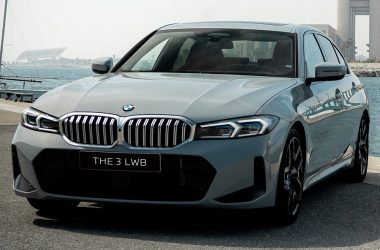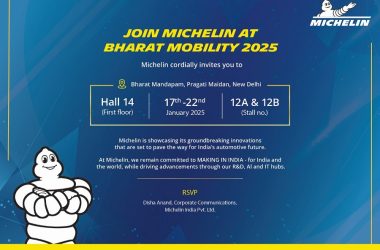Mumbai, 24 June 2024 — At the 79th Annual General Meeting of Tata Motors Ltd, Chairman Natarajan Chandrasekaran outlined the company’s robust performance in the past fiscal year and shared an ambitious roadmap for the future. Speaking to shareholders, Chandrasekaran emphasized Tata Motors’ resilience and adaptability in a challenging global economic landscape.
“Good Afternoon, Ladies and gentlemen. Let me take this opportunity to take you through the backdrop in which your company is operating, the performance last year as well as the plans for the years to come,” Chandrasekaran began.

Navigating Global Challenges
Chandrasekaran acknowledged the ongoing geopolitical turmoil and military conflicts that have led to economic instability worldwide. Despite these challenges, he noted that coordinated actions by central banks have moderated inflation, with global growth projected at around 3% over the next few years. He highlighted three key structural shifts shaping the industry: the transition to green mobility, supply chain resiliency, and the mainstream adoption of Artificial Intelligence and Machine Learning.
Stellar Performance in FY24
Chandrasekaran expressed pride in Tata Motors’ performance during FY24, stating, “The company has delivered an excellent performance in FY24.” Key achievements include:
- Total vehicle sales: Increased by 7.4% to over 13.8 lakh units.
- Revenues: Reached ₹437.9K Cr.
- EBITDA: Stood at ₹62.8K Cr.
- Net profit: Soared to ₹31.8K Cr, a significant increase of ₹29.1K Cr from the previous year.
He also announced that the India automotive business is now debt-free, with plans to achieve the same for Jaguar Land Rover (JLR) in FY25.
Passenger Vehicles and EV Leadership
The Passenger Vehicles (PV) and Electric Vehicles (EV) segments reported record sales of over 5.7 lakh units, up 6% from FY23. With a strong focus on emission-friendly technologies, CNG and electric vehicles now comprise 29% of Tata Motors’ portfolio. The company maintains a 70% market share in EVs, and the new production facility in Sanand was operationalized within a year of acquisition.
Commercial Vehicles: Profitable Growth
The Commercial Vehicles (CV) business recorded an annual revenue of ₹78,791 Cr, growing by 11.3% compared to FY23. The segment’s profit before tax (PBT) increased by approximately 90% to ₹6,102 Cr. Tata Motors aims to expand its Non-Vehicular business and incubate Smart Mobility and Digital business solutions.
JLR: Reimagining Luxury
JLR has overcome supply constraints and geopolitical instability to record its highest-ever annual revenues of £29 billion, a 27% increase year-on-year. The business also achieved a PBT of £2.1 billion and record free cash flows of £2.3 billion in FY24. Chandrasekaran highlighted JLR’s new house of brands approach and the introduction of new corporate identities to drive its modern luxury vision.
Strategic Corporate Actions and Future Plans
In FY24, Tata Motors delisted its American Depositary Shares from the New York Stock Exchange, partially divested Tata Technologies Ltd through a successful IPO, and announced the merger of Tata Motors Finance with Tata Capital Ltd. Chandrasekaran also unveiled plans for a demerger to create two separate listed entities focusing on Commercial Vehicles and Passenger Vehicles, including JLR.
Conclusion
Chandrasekaran concluded with a call to action: “We have an exciting journey ahead of us, and the management teams are very committed and focused on accelerating our growth journey.” He then invited Group CFO P.B. Balaji to present a detailed financial overview.
Tata Motors continues to set ambitious goals and demonstrate resilience, aiming to lead the automotive industry through innovation and strategic growth amidst global challenges.







